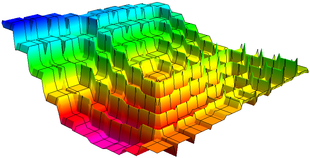10-327/Classnotes for Thursday November 18
From Drorbn
Jump to navigationJump to search
| ||||||||||||||||||||||||||||||||||||||||||||||||||||||||||||
See some blackboard shots at BBS/10_327-101118-142430.jpg (unfortunately some blackboards from the middle of the proof or Urysohn's lemma got forgotten).
| Dror's notes above / Student's notes below |
Here are some lecture notes:
Questions by Kai Xwbdsb 21:26, 19 November 2010 (EST):
- I have concern about this "Adding T_1 thing". When we are proving the Urysohn's Lemma, we proved that if X is a T.S. and A,B are any two disjoint closed sets in X, they can be separated by two disjoint open sets in X iff they can be separated by a continuous function. So there is no T_1 axiom involved in any of these two proofs. So Urysohn's Lemma is something more general than T_4 iff T_4.5 right?
- You are probably right and Urysohn applies even without . Yet we want all else does not imply and below, and we will need very soon. Drorbn 06:02, 20 November 2010 (EST)
- I just want to also confirm the definition of T_4 and T_4.5: T_4 is T_1 + separation by two disjoint open sets for any two disjoint closed sets and T_4.5 is T_1 + separation by a continuous function for any two disjoint closed sets?
- Indeed so. Drorbn 06:02, 20 November 2010 (EST)
- The only purpose of this manually adding T_1 thing is that so that T_4 and T_4.5 could imply T_3 T_2 T_1 right?
- Indeed. Drorbn 06:02, 20 November 2010 (EST)
- Dror you said before that induction can go up to finite n but why in this case induction will work for a countably infinite set of elements?
- We are never making a statement about an infinite set of rational numbers directly through induction. We are only constructing something for the 'th rational, for each . We then look at the totality of these constructions, but that's already outside the induction. Drorbn 06:02, 20 November 2010 (EST)
- So you mean if properly used, mathematical induction could prove things involve countably infinite objects right? Just like in this case. -KaiXwbdsb 11:32, 20 November 2010 (EST)

![{\displaystyle [0,1]}](https://wikimedia.org/api/rest_v1/media/math/render/svg/738f7d23bb2d9642bab520020873cccbef49768d)







